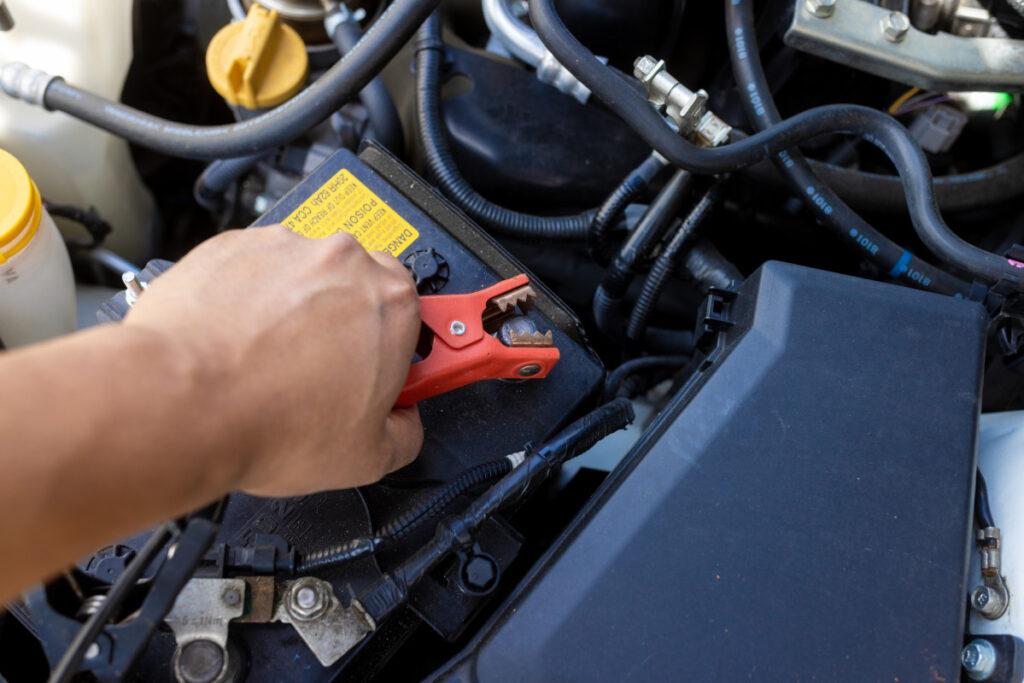The auto industry faces yet another supply chain issue stemming from China
Antimony is a material critical to lead-acid battery manufacturing, and China’s export restrictions on this critical mineral, implemented last summer, have battery makers under pressure. Lead-acid batteries in the automotive industry are most commonly found in gas-powered vehicles and are used for functions like engine starts and powering low-voltage instruments such as dashboard displays. Antimony is also used in EV lead-acid batteries and flame-retardant materials.
According to Reuters, Antimony now costs more than $60,000 per metric ton, which is more than quadruple its year-over-year price. In 2024, China produced 60% of the world’s antimony supply, and several countries that mine the mineral process it in China. Beijing added antimony to its export control list last September, and companies now need a license for overseas deals. Additionally, China banned U.S. antimony exports in December, which remains in effect. China’s global antimony exports are now a third of last year’s.
Getty
How is the U.S. responding?
U.S. companies are responding with gray market antimony purchases or buying at elevated prices from sellers who pre-accumulated stockpiles. Last week, China and the U.S. reached a deal on rare earth exports, which the automotive industry heavily relies on for magnets used in several vehicle parts, but antimony doesn’t appear to have been discussed between the two countries. Like antimony, China has a monopoly on rare earths, but at a higher percentage than antimony, with 70% of mining and 90% of processing occurring domestically.
Steve Christensen, executive director of the U.S.-based Responsible Battery Coalition, labeled the antimony situation a national emergency and said Western countries have become “Overly reliant on a single geopolitical adversary for minerals foundational to both national defense and civilian life,” Reuters reports. Christensen added: “For the U.S., the path forward must include onshoring processing capacity, scaling domestic recycling, and building strategic mineral alliances with trusted partners. Otherwise, this crisis will repeat itself again and again.”
Clarios, a U.S.-based global leader in battery manufacturing, disclosed last month that it was considering locations for a critical minerals processing and recovery plant in the U.S. that would extract antimony, among other minerals. The facility would cost up to $1.9 billion, and Indiana, Texas, and Utah are emerging as potential locations. Antimony is listed by the U.S. Department of the Interior as a mineral critical to the U.S. economy and national security. The U.S. Antimony market size is expected to rise from $270 million in 2024 to $550 million by 2035, with a 6.82% growth rate, according to Market Research Future. Overall, antimony demand is around 230,000-240,000 tons a year, with lead-acid batteries accounting for about a third of that, Reuters reports using data from consultancy Project Blue.
Final thoughts
Antimony remains essential in the automotive industry as more car manufacturers extend timelines for gas-powered vehicle production and use the critical mineral in the growing EV segment. Securing a stable supply of antimony and rare earths for magnets is vital in avoiding future bottlenecks from countries like China. If the U.S. doesn’t diversify its antimony supply chains and help facilitate competition within the market, production costs could continue to increase at a time when car prices are already high, and segments like EVs could experience slowed growth.

